
 |
Tea Clipper |
 |
| from TeaAntiques.com | ||
| Edition Sixty Seven |
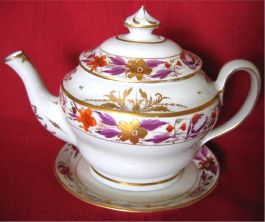 This
month's 'Featured Antique', is a beautiful New Hall teapot with cover and stand
dating from c1810. This delightful teapot and stand is in excellent condition and has
the very decorative floral pattern, pattern number 317.
This
month's 'Featured Antique', is a beautiful New Hall teapot with cover and stand
dating from c1810. This delightful teapot and stand is in excellent condition and has
the very decorative floral pattern, pattern number 317.
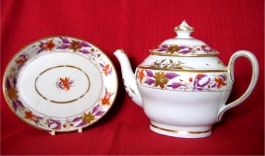 It
is increasingly rare to find such beautiful early teapots that are in good condition
complete with their original stand, as this one is.
It
is increasingly rare to find such beautiful early teapots that are in good condition
complete with their original stand, as this one is.
The same charming band of coloured floral decoration is applied to the main body of the teapot, the cover and to the oval stand. This makes for a decorative and elegant early New Hall teapot, perfect for the collector of New Hall or early English porcelain.
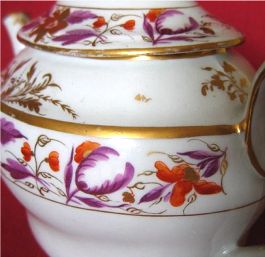
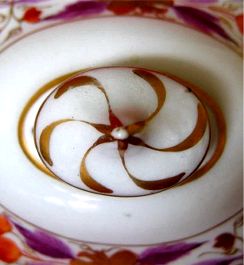
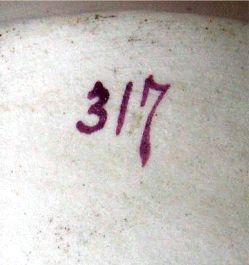
More details of this item and other tea related antiques can be found by visiting my web site at www.TeaAntiques.com.
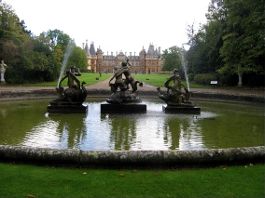 Driving
up the hill on which Waddesdon Manor is set, it comes as a bit of a surprise to
snake your way up to what can only be described as an Eighteenth century style French
Château in the heart of England! The first view of the Manor is from the north drive
from the north fountain. The view immediately tells you that this is no ordinary
English country house, but then it is unlikely to be - having been built the extremely
rich and influential Rothschild family.
Driving
up the hill on which Waddesdon Manor is set, it comes as a bit of a surprise to
snake your way up to what can only be described as an Eighteenth century style French
Château in the heart of England! The first view of the Manor is from the north drive
from the north fountain. The view immediately tells you that this is no ordinary
English country house, but then it is unlikely to be - having been built the extremely
rich and influential Rothschild family.
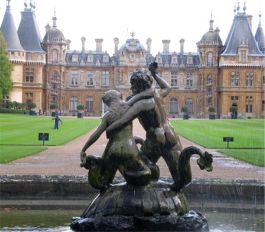 This
magnificent creation is not only built to resemble a very grand French Château,
it contains some of the finest French furniture and porcelain together with a magnificent
collection of English paintings. It is now in the fourth generation of the Rothschild
family, but administered by the National Trust.
This
magnificent creation is not only built to resemble a very grand French Château,
it contains some of the finest French furniture and porcelain together with a magnificent
collection of English paintings. It is now in the fourth generation of the Rothschild
family, but administered by the National Trust.
The exterior of this manor has the typical turrets, pinnacles and entablature of a French Renaissance Château. The Waddesdon Estate was purchased from the Duke of Marlborough by Ferdinand de Rothschild in 1874. It is he who then, as a 35 year old widower, spent the last 24 years of his life creating the manor. During the Dynasty of the Rothschild's, they built no fewer than 40 grand houses across Europe. Of these only a few remain, including Waddesdon Manor, complete with its fine collections within.
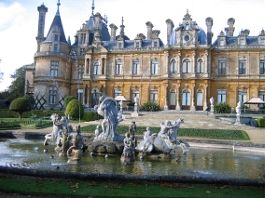 When
Ferdinand purchased the Waddesdon Estate, there was no house, park or gardens. Therefore,
he had a blank canvas on which to create his dream house and gardens. He was intrigued
with the style of the French Châteaus of the Loire valley in France and sought an
architect who could design him such a home. The architect chosen for this task was
Gabriel-Hippolyte Destailleur. Initial designs drawn up included a ballroom and
wintergarden, but Ferdinand had the plans reduced - nearly halving the size of the
proposed house. The architect did warn him that 'one always builds too small', a
remark that Ferdinand was later to agree with and had to have the manor later extended.
When
Ferdinand purchased the Waddesdon Estate, there was no house, park or gardens. Therefore,
he had a blank canvas on which to create his dream house and gardens. He was intrigued
with the style of the French Châteaus of the Loire valley in France and sought an
architect who could design him such a home. The architect chosen for this task was
Gabriel-Hippolyte Destailleur. Initial designs drawn up included a ballroom and
wintergarden, but Ferdinand had the plans reduced - nearly halving the size of the
proposed house. The architect did warn him that 'one always builds too small', a
remark that Ferdinand was later to agree with and had to have the manor later extended.
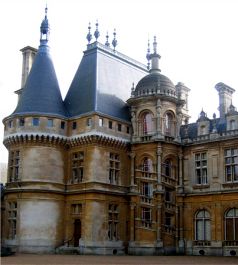
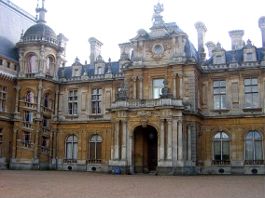
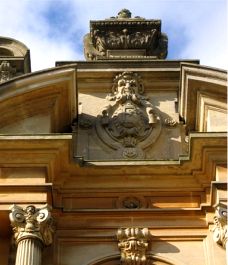
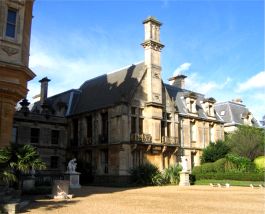 Begun
in 1877, by 1880 the Bachelors' Wing to the east side of the Manor was completed
as the first stage. That year Ferdinand held a party there for his seven closest
male friends. This Bachelors' wing housed the service rooms such as the kitchen
in the basement. From then, in another three years, in 1883 the main part of the
house was complete. Built as a place in which to entertain, it was actually only
open for entertaining friends between May and August for weekend parties. A frequent
guest to such parties was Albert Edward, Prince of Wales. Many other European royal
members were entertained at Waddesdon and even Queen Victoria came to lunch there.
Begun
in 1877, by 1880 the Bachelors' Wing to the east side of the Manor was completed
as the first stage. That year Ferdinand held a party there for his seven closest
male friends. This Bachelors' wing housed the service rooms such as the kitchen
in the basement. From then, in another three years, in 1883 the main part of the
house was complete. Built as a place in which to entertain, it was actually only
open for entertaining friends between May and August for weekend parties. A frequent
guest to such parties was Albert Edward, Prince of Wales. Many other European royal
members were entertained at Waddesdon and even Queen Victoria came to lunch there.
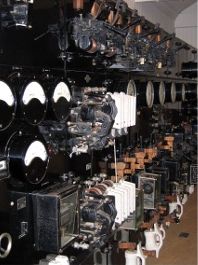 The
house was designed for comfort, including the house staff of 24. Central heating
and electricity were installed as soon as they became available. the electrical
switch gear panels for the house are still preserved in the Power House set a short
distance from the house. The lighting delighted Queen Victoria, and she instructed
to have them switched on and off over and over again to her amusement!
The
house was designed for comfort, including the house staff of 24. Central heating
and electricity were installed as soon as they became available. the electrical
switch gear panels for the house are still preserved in the Power House set a short
distance from the house. The lighting delighted Queen Victoria, and she instructed
to have them switched on and off over and over again to her amusement!
Approaching this very elaborate building from the North Drive, you enter into the Oval Hall with the East and West Gallery either side, which have a stair case at their far ends giving access to the first floor. Moving through the east Gallery there is the first taste of some of the exquisite treasure to come - an automaton in the form of a huge elephant. When wound and operating this plays four tunes, the elephant's trunk, tail and ears move, and figures move across a stage in the base section. this splendid object was the creation of a French Clockmaker H. Martinet, when working in London, c1774.
The East Gallery leads through to the Breakfast Room, it was here that male guests would partake of breakfast, whist the ladies of the party, had theirs in their bedrooms. This room, as with many in the Manor, is lined with French eighteenth century panelling, taken from Parisian houses. In this particular room, it is some of the finest panelling to be found in the house. This panelling is stripped of its eighteenth century paint and has had the rococo details gilded. There are some very large Meissen white birds and animals in the house, two are displayed in this room - a turkey and a goat. These made at the Meissen factory c1732 were a marvel of their time. It had been impossible to fire such large pieces and even these show signs of firing cracks. They could not survive a further firing to give them their colours, so were then painted in oil paints, which have since gradually washed away to reveal the brilliant white of the porcelain below.
A small and very light conservatory room on the South East corner of the house, links through to the grand marble clad Dining Room - a truly magnificent spectacle to behold. This room was inspired by the fashionable marble clad state apartments of King Louis XIV at the Palace of Versailles, France. Also lining the marble walls are panels containing French Beauvais tapestries, these adding a warmth to the look of the room. The massive dining table is covered with a white table cloth and down the entire length of the table in the centre is a gilt bronze centre piece with a mirrored plateau base reflecting its splendour. It was made as a gift from Louis XVIII to the Sicilian Ambassador in 1818. There is a set of nineteenth century porcelain and English Anglo glassware on the table creating a beautiful table display.
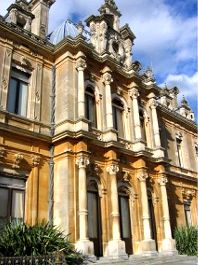 Passing
through the Dining Room into the Red Drawing Room, this is the central room on the
South front of the house, and is where guests gathered before going through to dinner
in the Marble Dining Room. As the name suggests, the walls of this elegant room
are hung with crimson red damask wall hangings. This room contains some furniture
made for the French Royal Family including two very fine chests of drawers, with
marble tops and decorative ormolu mounts. The marble mantle piece is French and
on it are some blue Sèvres vases and an ornately gilded French clock. In contrast
to the rest of the French furnishings, on the walls are some important English eighteenth
century paintings! On either side of a doorway are two beautiful paintings, one
of the Prince of Wales, later to be King George IV with his horse by Thomas Gainsborough
1782 and the other of his close friend, Captain St Ledger who was later to be his
Groom of the Bedchamber, this portrait by Reynolds 1778.
Passing
through the Dining Room into the Red Drawing Room, this is the central room on the
South front of the house, and is where guests gathered before going through to dinner
in the Marble Dining Room. As the name suggests, the walls of this elegant room
are hung with crimson red damask wall hangings. This room contains some furniture
made for the French Royal Family including two very fine chests of drawers, with
marble tops and decorative ormolu mounts. The marble mantle piece is French and
on it are some blue Sèvres vases and an ornately gilded French clock. In contrast
to the rest of the French furnishings, on the walls are some important English eighteenth
century paintings! On either side of a doorway are two beautiful paintings, one
of the Prince of Wales, later to be King George IV with his horse by Thomas Gainsborough
1782 and the other of his close friend, Captain St Ledger who was later to be his
Groom of the Bedchamber, this portrait by Reynolds 1778.
Beyond the Red Drawing room is the Grey Drawing room. Slightly more subtle than the red Drawing room, having grey painted French panelling rather than rich damask. Like the Red Drawing room this room contains some sumptuous French furniture and more Sèvres porcelain from the famous eighteenth century factory. Some of the ornate French furniture contain Sèvres porcelain plaques. One such piece a pretty little ladies' desk, which was given to Elizabeth, Marchioness of Conyngham, who was a mistress of King George IV.
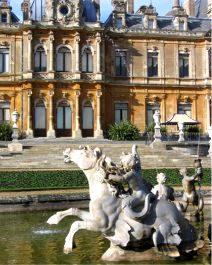 Much
of the Sèvres porcelain in the Grey Drawing room is of the rare pink ground colour
known as 'rose' in the factory but often called 'rose Pompadour pink' by collectors
in the nineteenth century. The Sèvres factory was granted royal status in 1753 and
from then allowed to mark its pieces with the interlinked Ls which was the royal
cipher and a letter giving the year of manufacture.
Much
of the Sèvres porcelain in the Grey Drawing room is of the rare pink ground colour
known as 'rose' in the factory but often called 'rose Pompadour pink' by collectors
in the nineteenth century. The Sèvres factory was granted royal status in 1753 and
from then allowed to mark its pieces with the interlinked Ls which was the royal
cipher and a letter giving the year of manufacture.
A magnificent set of French gilt framed saloon furniture graces this room, the backs and seats covered in colourful red bordered tapestries.
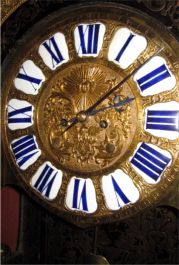 Moving
out of the Grey Drawing room into the West Gallery, there are some fine French clocks,
more Sèvres porcelain and a couple of good quality French desks. One of the large
clocks is a Boulle turtle and brass marquetry clock. There are four brass caryatides
one at each corner of the clock case, each depicting one of the four continents.
Europe is dressed in Western clothing; Asia wears a turban; America a feathered
head-dress and Africa wears an elephants mask. There are some rare green ground
Sèvres porcelain vases which have elephant masks as the handles with upturned trunks
c1756.
Moving
out of the Grey Drawing room into the West Gallery, there are some fine French clocks,
more Sèvres porcelain and a couple of good quality French desks. One of the large
clocks is a Boulle turtle and brass marquetry clock. There are four brass caryatides
one at each corner of the clock case, each depicting one of the four continents.
Europe is dressed in Western clothing; Asia wears a turban; America a feathered
head-dress and Africa wears an elephants mask. There are some rare green ground
Sèvres porcelain vases which have elephant masks as the handles with upturned trunks
c1756.
Moving through the West Gallery into the Small Library. here Ferdinand kept his book collection, much of which centred around historical works. Many books in this collection were inscribed to him by their authors. This room leads on to the Baron's room, this the part of the house which contained his private apartments. There are a set of gilded wall lights around the room, which were made for Marie-Antoinette's apartments at the Chateau of Compiègne in 1787. One of the principle pieces of furniture in this room and indeed the house, is a roll top French desk of mammoth proportions. The whole of the desk is smothered in intricate veneers, including central panels of pictures. The ormolu mounts on the desk are of the finest quality and extremely decorative.
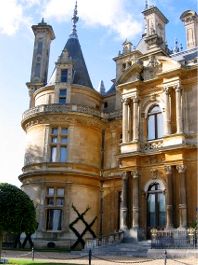 The
final room to be seen on the ground floor, is the Tower room. This intimate room,
housed in the circular tower at the South West corner of the house, is richly decorated
in red silk. This room houses Ferdinand's collection of curiosities. This collection,
has now been moved to the Smoking room in the Bachelors' wing, this room now furnished
with some more exquisite French furniture, again some with royal connection. the
piece that caught my eye, another roll-top desk, not as large as the one in the
Barons' room, but equally as impressive. This one was made in 1773 for Marie-Adèlaïde,
fourth daughter of Louis XV. her cipher is inset on the back of the desk in the
form of her initials 'MA' with three fleur-de-lis. There are elegant ormolu mounts,
some of which extend out to the die of the roll top desk forming rococo candle brackets.
The
final room to be seen on the ground floor, is the Tower room. This intimate room,
housed in the circular tower at the South West corner of the house, is richly decorated
in red silk. This room houses Ferdinand's collection of curiosities. This collection,
has now been moved to the Smoking room in the Bachelors' wing, this room now furnished
with some more exquisite French furniture, again some with royal connection. the
piece that caught my eye, another roll-top desk, not as large as the one in the
Barons' room, but equally as impressive. This one was made in 1773 for Marie-Adèlaïde,
fourth daughter of Louis XV. her cipher is inset on the back of the desk in the
form of her initials 'MA' with three fleur-de-lis. There are elegant ormolu mounts,
some of which extend out to the die of the roll top desk forming rococo candle brackets.
The last room to view on the ground floor is the large and beautiful Morning room. This room was part of the extension, having ignored his architect's advice that 'one always builds too small'. It was a large room as Ferdinand wanted a room where all his guests could meet, but where they could pursue their own activity be it reading, or writing without disturbing one another. The most impressive piece of furniture in this room has to be a huge black lacquered drop-front desk, incorporating, not one, but two clocks. One clock is mounted near the top of the desk to be viewed from a far, the other at eye level when sat at the desk. It was made in 1770 by René Dubois and Jacques Goyer. Amongst the other important pieces of French furniture in the room are two desks belonging to King Louis XVI.
Having marvelled at the beautiful rooms and stunning contents of the ground floor, taking the stairs at the end of the west Gallery, we have many more treats in store on the first floor.
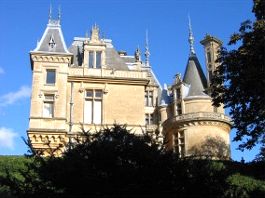 There
are about three rooms devoted to the collections of Sèvres porcelain, aptly called
the Sèvres Rooms. Here there is just too much to take in! There are some of the
finest and rarest pieces of Sèvres porcelain with various ground colours, paintings
of birds and flowers, etc. These display rooms are in what was once Ferdinand's
bedroom suite. These Sèvres porcelain rooms were opened by Her Majesty The Queen
in 1995.
There
are about three rooms devoted to the collections of Sèvres porcelain, aptly called
the Sèvres Rooms. Here there is just too much to take in! There are some of the
finest and rarest pieces of Sèvres porcelain with various ground colours, paintings
of birds and flowers, etc. These display rooms are in what was once Ferdinand's
bedroom suite. These Sèvres porcelain rooms were opened by Her Majesty The Queen
in 1995.
There are similar examples of fine Sèvres porcelain to be seen at the Wallace Collection in London - some pieces belonging to the same sets.
Apart from the State Bedroom, Dressing Room, Portico Bedroom, there is a room called the Green Boudoir, so called because of the dark green panelling around the walls, exuberantly embellished with gilt chinoiserie decoration. This panelling originated from a Parisian town house and dates from the early eighteenth century. The interesting feature for me was in the fan shaped panels above the doors. In these panels are gilt relief pictures of dressed monkeys and people in oriental dress. One such panel shows these dressed monkeys sat at a tripod tea table taking tea.
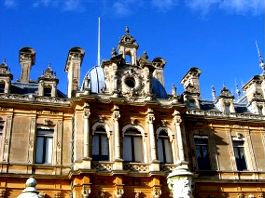
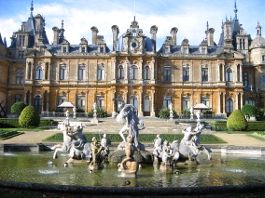
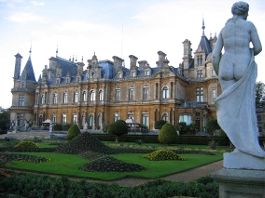
The White Drawing room on the first floor, which affords a beautiful view of the formal gardens and fountain on the South Front of the house, now displays a most important Royal silver service commissioned by King George III in 1770. This extensive dinner service was made for George III in Hanover, where he was the Elector.
The Bachelors' wing of the house, which was the first part of the house built, contains on the first floor a Smoking room for the men and Billiards room. The decoration in this part of the house is quite different to the rest of the house, here it feels much more Victorian masculine rather than decorative French.
Leaving the house, bedazzled having seen so many great and rare treasures, I needed to go for tea and refreshments at the Stables restaurant, located hidden from view of the house at the foot of the hill. Here they serve hot lunches as well as afternoon tea. I ordered a round of egg sandwiches and scones, cream and jam together with a pot of Lapsang Souchong tea. Having had Lapsang Souchong as one of the choices of tea on their menu, I was rather amazed to be told that they did not have any! Surely, this is not something that runs out quickly, and I could not understand why if it had been managed well, it would be available at all times! Anyway, despite that, the large scones were very good indeed. Home-made, served warm and with a good light texture, they went well with the jam and clotted cream.
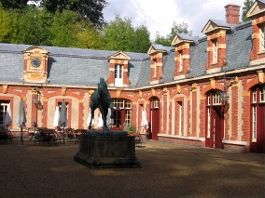
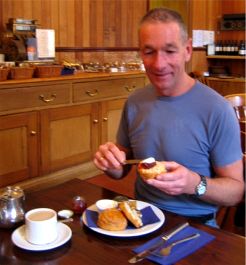
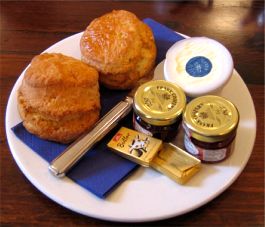
To end my visit to Waddesdon, I took a little turn around the gardens, which afford some fantastic views of the house and the surrounding countryside. On the South front of the house there is a formal garden with large gushing fountain, perfectly framing the beautiful house. In the grounds there is also a magnificent cast iron aviary, built by Ferdinand sometime before 1889. This is ornately decorated in a blue paint and has gilded rococo decorative features - very grand. This aviary houses some exotic birds and in the centre section, there is a little water grotto with white statues, the perfect place to sit on a hot summer's day.
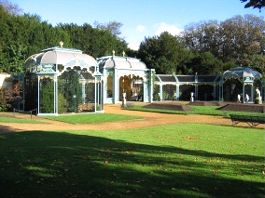
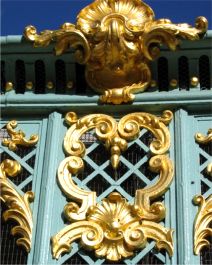
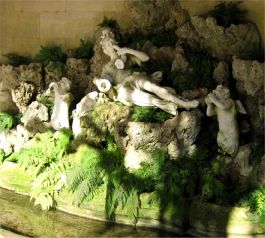
This completes my tour of this truly spectacular house and gardens. It was like stepping in to a grand château in the heart of France in the eighteenth century - an experience I will always fondly remember.
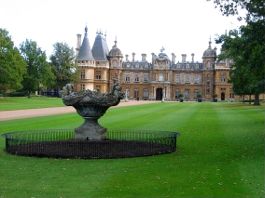
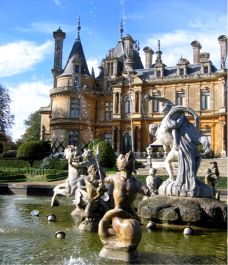
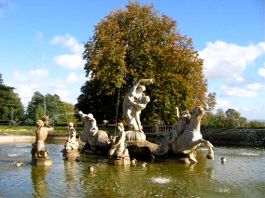
Waddesdon Manor
Near Aylesbury
Buckinghamshire
HP18 0JH
Tel: 01296 653211
Click here for
Local Map
Map courtesy of www.streetmap.co.uk
On the 20th May 2006, I was delighted to be able to host a visit to my home and garden for a tour party of nearly 30 Japanese Royal Horticultural Society members. The tour party was on a visit to England for the famous Chelsea flower show and to also visit some beautiful English gardens such as Exbury, Hilliers and Denmans. As part of this tour it was arranged to visit my garden and home after it had been featured in a Japanese magazine.
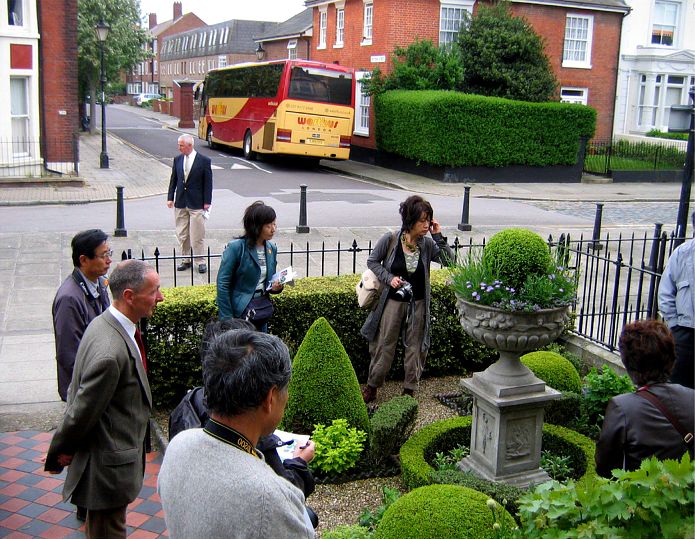
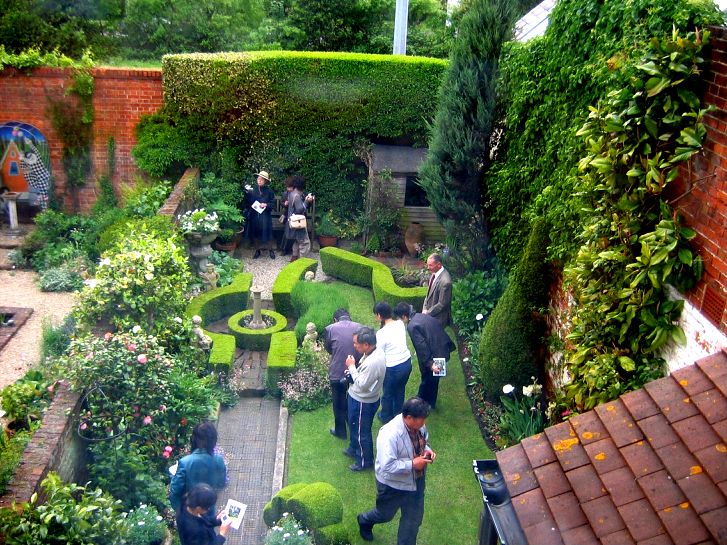
Despite a rather windy and cloudy day, the visit was a great success and enjoyed by the tour group. As well as giving a personal guided tour of the historic street and house interior, I was able to give them a little guide of the garden.
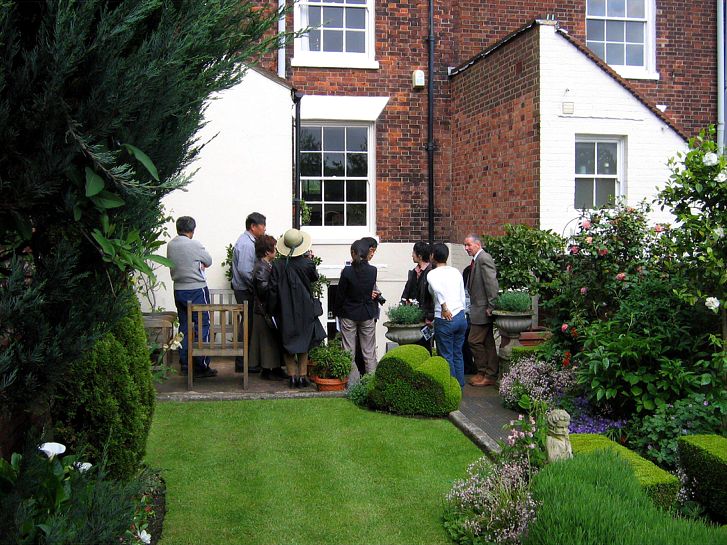
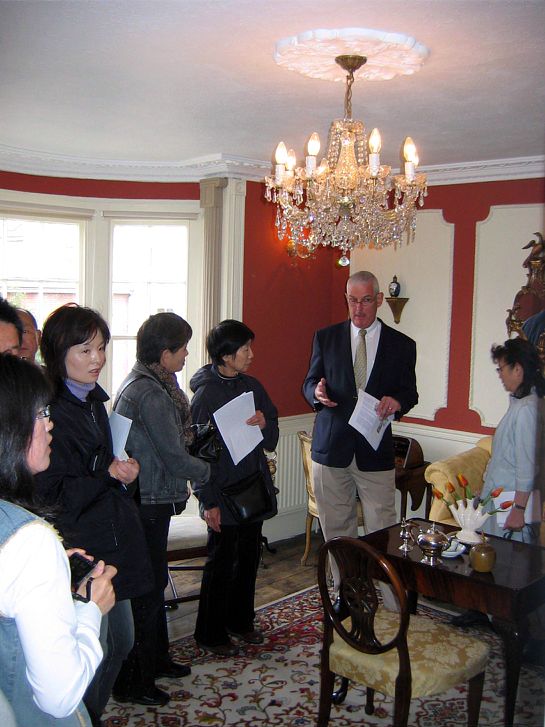
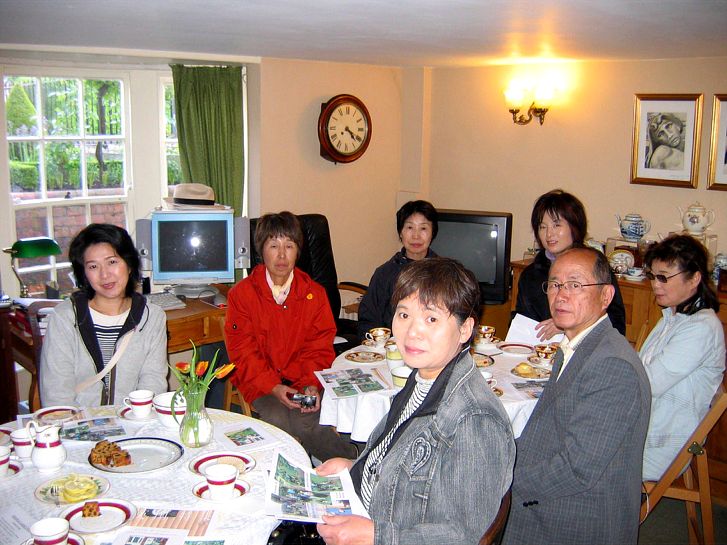 Complementary
tea was served to them all, including cups of English tea and a variety of home-made
cakes, which went down well and were much appreciated. It was a great pleasure to
extend this hospitality and to give a flavour of a typical afternoon tea and cakes
in an English home, which included a rich fruit cake, plain and cherry shortbread
and individual 'butterfly' cakes.
Complementary
tea was served to them all, including cups of English tea and a variety of home-made
cakes, which went down well and were much appreciated. It was a great pleasure to
extend this hospitality and to give a flavour of a typical afternoon tea and cakes
in an English home, which included a rich fruit cake, plain and cherry shortbread
and individual 'butterfly' cakes.
I hope that the tour party enjoyed visiting the other gardens on the itinerary and the Chelsea flower show. I wonder if they spotted the new for 2006 rose from rose grower John Austen, appropriately named 'Tea Clipper'? It was mentioned on one of the BBC television programmes covering Chelsea flower show, in which the gardener / presenter, Alan Titchmarsh described the rose as a rather Peony looking flower and having a sweet scent with a hint of tea. This beautiful looking rose is a pale salmon colour - maybe a perfect addition to a tea lover's garden?
To review past newsletters, just follow this link:
Past newsletters.
To subscribe to this free newsletter -
Click here